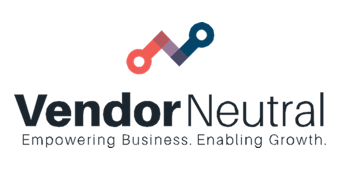Structured, Strategic Sales Technology Ecosystem
Why B2B Organizations Require a Structured Sales Technology Ecosystem
Tips for Increasing Sales Tech Adoption and Seller Efficiency
Without a strategy and structured system, any sales technology tool a company implements is going to be a reactive, one-off solution. Here’s how to implement the ecosystem that can support scalable, profitable sales technology selection, adoption, and integration.
Addressing the Problem: Sales Technology Can’t Be a Quick Fix
Most organizations engage with sales technology because they have an immediate need. For example, they recognize they need to be engaging with customers better. So, they jump to a technological solution that will move the needle quickly.
What’s the problem with this system? None of the technology addresses the underlying problems in processes or systems. Every technological solution implemented as a knee-jerk reaction to a problem is poised to be unused, underused, or improperly aligned to the company’s selling process.
The financial impact of this is in the billions. Here’s just one study related to the cost of unused software in K–12 school districts alone.
If you want to see maximum return on your investment, technology can’t just arbitrarily bolt on to different parts of your sales process. If the solutions are not truly enabling your overarching system, more than likely they are simply taking sales reps out of their work flows. This costs hours of time and yields no real value.
So, how can organizations see success with sales technology? By approaching integration through an ecosystem mind-set.

What Is a Sales Technology Ecosystem?
Creating a sales technology ecosystem is a foundational approach to integrating your technological solutions with your processes and systems. A company can enter or exit this structure at any relevant point, but building from the ground up, an ecosystem involves four main paints.
4 Steps to Creating a Sales Technology Ecosystem
1. Stakeholder Audit
The first step in creating a successful ecosystem is auditing all your relevant stakeholders. Make sure to identify everybody who would be impacted by the adoption of tech. If you have the time and resources, interview them all. Get firsthand accounts of what their problems, challenges, and goals are.
Once you know everyone who will be impacted and you’ve gathered their individual priorities and responsibilities, you’re in a better position to determine what your overarching goals and outcomes should be.
Stakeholders drive your organization forward, and if you’re not reflecting on their needs, you can’t ever hope to secure consistent, effective buy-in for any technological tool.
2. Technology Audit
After your stakeholder assessment, move to a thorough technology audit. This will identify all the existing technology that’s currently supporting your stakeholders. You’ll also gather any data or analytics that support those solutions and the current decision-making processes.
Think about every aspect of the sales landscape, and don’t leave out any existing tech—even if it seems foundational or given. Email and any other form of communication tools, for example, should be included in this audit.
After you’ve gathered all the raw information, you can start to get a picture of your existing tech landscape. You’ll also start to see where gaps exist, as well as overlap of resource and solution functionality.
These overlaps (areas where two separate technological tools perform the same function) are almost always opportunities to reduce tech and to save money.
This audit will help lead you to more precise and more useful definitions of process.
3. Capabilities Audit
The next step is a capabilities audit. This will help you identify your existing capacity to implement different kinds of sales technology. This can be another tremendous opportunity to save money because it illuminates what kind of infrastructure and resources you have at your disposal.
If you don’t currently have the capabilities to implement or to utilize all the functionality of the gold standard in a given solution, then you know you should be paying for a less complex solution or a lower tier of that tool.
A capabilities audit can also help reveal what foundational tech you’re going to need to move forward. Perhaps that’s a customer relationship management (CRM) tool. Maybe it’s an enterprise resource planning (ERP) resource. Whatever the specifics, there will usually be a foundational technological repository to integrate data and resources back into.
4. Technology Assessment and Selection
At the end of this process, you’re ready to start aligning your technological selections to your defined systems. At this point, you can start to think about what technological tools will support your stakeholders, as well as help you reach your defined goals.
Always judge a potential technological tool against its financial upside. Will this tool help save you money, time, and other resources? If not, it’s a net loss and isn’t worth the investment.
5 Tips for a Better, More Effective Sales Technology Ecosystem
1. Don’t Boil the Ocean
Start small, and gain quick wins. Even if you’ve identified a litany of gaps in your tech, don’t try to solve all those problems at once. Start with what’s going to move the needle the most. Determine what is going to gain you credibility within the organization and within the group of stakeholders. It’s not about trying to bring in a whole stack at once; it’s about smartly identifying the solutions that will make the biggest impact.
At this point, you’ve done months of auditing and groundwork. You know your organization’s workflow, and you know where it’s broken. Bring in what’s going to have the biggest impact, whether that’s the sales enablement functionality of Bigtincan, Flipdeck, Highspot, Mediafly, SalesHood, and Seismic, the forecasting capabilities of Membrain, or the artificial intelligence-guided decision-making platform of DealCoachPro.
2. Conduct a Proof of Concept (POC) or Pilot Program
Before rolling out a program to the entire organization, run a small pilot program of five to ten people. This should be comprised of top performers, middle performers, and bottom performers. (Remember, you want all voices and perspectives represented in your program because that will better approximate the pool you’ll encounter with a full rollout.)
A pilot program can help you determine if this is something that can feasibly be scaled and gain traction within the larger organization.
3. Adoption Means Return on Investment
One of the biggest problems with sales tech is getting people to use it. When a licensed tool sits on the shelf, that’s money needlessly wasted. Every. Single. Month.
When you have your best practices defined and you’re always working with the goals, priorities, and needs of your stakeholders in mind, you’re in the best position for successful, ongoing tech adoption.
Approached this way, stakeholders are willing to communicate. They feel invested and heard in the selection process, and they understand how the technological tool is going to get them to their personal, departmental, and company-wide goals.
This is the recipe for year-over-year adoption and significant return on investment.
4. Integration and Alignment Are Key
An ecosystem is not about any one program, process, or tool you implement. It’s a holistic way of viewing how you want to align all the relevant elements of a sales tech process: strategy, selection, adoption, and growth. If you don’t have this kind of mind-set, you’re more likely to get stuck in that loop where you’re just choosing one-off solutions as problems arise.
When you step back and look at everything in a more structured, more aligned way, results are proactive, scalable, and more financially impactful.
5. Think of an Ecosystem in Terms of Value
Depending on the size and scope of your organization, a structured sales enablement ecosystem could have a multimillion-dollar impact on your bottom line. An ecosystem can help you with strategy, adoption, and scalability. It’s all about making your processes as efficient and effective as possible, and at the enterprise level, an ecosystem speaks to tens of millions of dollars in potential impact.
When companies understand the upside of these holistic ecosystem-level changes, they are more likely to follow through with a strategic implementation plan.
Are you sick of being frustrated and wasting time and resources on sales technology solutions? When it comes to tech integration and adoption, are you tired of feeling as if you’re being pulled in multiple different directions? Reach out!
We’re passionate about successful sales technology integration, and we love talking about the ecosystems that help that thrive. Tell us more about your company today!


